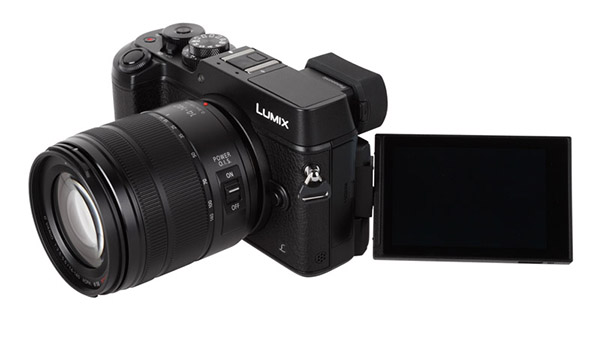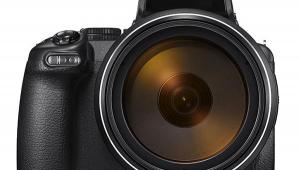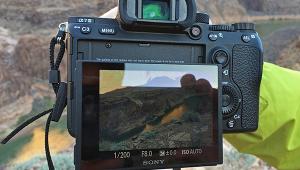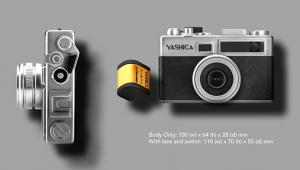7 Ways Mirrorless Cameras Surpass DSLRs & 7 Ways DSLRs Still Top Mirrorless Cameras

The hot topic for serious shooters going into the New Year: Should you stick with the traditional DSLR system that has served you splendidly, or opt for one of the latest mirrorless compact system cameras that promises to deliver the full interchangeable lens shooting experience in a smaller, lighter package? Either type of camera can offer outstanding image quality and shooting flexibility, and that’s why there are really no “wrong” choices here. (Not to mention, you can always opt for both!)
Mirrorless cameras achieve their more compact form factor by eliminating the traditional reflex mirror, mirror box, and the mechanical components needed to move the mirror in and out of the light path for viewing and exposure. This also allows them to deliver continuous viewing and autofocus (AF) with no momentary mirror blackout. This results in a shorter lens mount-to-sensor (flange back) distance, which has some optical advantages.

On the other hand, the optical viewfinder (OVF) in a DSLR displays an image that many shooters find more “real” than the image in a mirrorless camera’s electronic viewfinder (EVF), and you can compose the picture even without turning the camera on. In addition, DSLRs generally have greater battery capacity and offer a wider range of dedicated lenses.
To help you decide which is best for you, here are two short lists that highlight their advantages and reveal their limitations.
7 Mirrorless Camera Advantages

1. Mirrorless cameras, irrespective of format, are almost always smaller and lighter than comparable DSLRs because they don’t require a relatively bulky, heavy mirror box and the mechanisms needed to move a reflex mirror into and out of the light path. As a result, they have fewer moving parts, are quieter in operation than traditional DSLRs, inherently less prone to causing shake-inducing vibration, and provide continuous viewing without blackout even at the moment of exposure.
2. Today’s top mirrorless cameras incorporate high resolution EVFs or OLED EVFs with incredibly rapid refresh rates (60 times per sec and up) that provide a brilliant, 100% coverage, high-magnification, eye-level viewing image that rivals that of most optical viewfinders (OVFs). Indeed, some EVFs display a larger-than-life-size image, making it easier to compose the picture and assess details.

3. The EVFs in mirrorless cameras allow users to preview the captured image (complete with exposure corrections and custom settings) in real time. This makes it easier, for example, to compose subjects in very dim light because the gain is automatically increased to make them more visible.
4. Mirrorless cameras typically include Hybrid AF systems that combine the advantages of fast, decisive on-sensor phase-detection AF (PDAF) and the precision of contrast-detect AF (CAF), taking their overall AF performance to a level surpassing that of all but top-tier DSLRs.

5. Further advantages of the hybrid CAF/PDAF systems in mirrorless cameras include the ability to provide continuous AF and focus tracking before and during the exposure, a crucial factor when shooting still images at high burst rates, or capturing clean HD video without visible or audible “hunting.”

6. Mirrorless cameras enable the layering of viewfinder information, such as camera settings, levels, histograms, focus peaking, etc., can provide an instant magnified image of the focusing area by touching the shutter release, and allow playback of images and videos in the EVF.

7. Mirrorless cameras have a shorter flange back (lens mount to sensor) distance, which makes it easier to design high quality lenses, particularly wide-angles, that provide better edge and corner illumination, and allows the seamless use of existing “open source” lenses by using simple mount adapters to expand the camera’s optical array. The possibilities include mounting lenses from other lens systems, classic rangefinder lenses, and lenses from obsolete or obscure systems.
7 DSLR Advantages

1. DSLRs, especially middle- and upper-tier pro models with solid glass pentaprism optical viewfinders, provide a brilliant, natural looking “real feel” viewing image that no mirrorless EVF can quite match. Many photographers accustomed to optical viewfinders consider this essential.
2. DSLRs are generally larger than mirrorless cameras, allowing more room for the placement of dedicated controls for various camera functions such as ISO, exposure compensation, white balance, etc. The control ergonomics of the best DSLRs typically have an edge over their current mirrorless counterparts in this respect.

3. DSLRs have larger bodies, which allows the use of larger volume batteries providing greater capacity than smaller batteries. With most pro-caliber DSLRs you can shoot all day without running out of battery power, and that’s not always true with comparable mirrorless cameras.

4. DSLRs have evolved into a very ergonomic shape and some of them are more comfortably contoured than their smaller mirrorless counterparts. Photographers with large hands often prefer DSLRs for that reason, and some shooters feel a somewhat heavier camera provides a more stable shooting platform than some of the smaller, lighter mirrorless cameras.

5. DSLRs, especially high-end pro models, have established an enviable record of durability, reliability, and consistent performance under adverse conditions despite their mechanical complexity compared to mirrorless cameras, and offer in-body or on-lens image stabilization systems to minimize the effects of mirror-induced camera shake. That’s why many pros are reluctant to make the switch.
6. DSLR optical viewfinders (OVFs) require no battery to display the image. This results in substantially lower power consumption overall, and lets you view and compose without turning the camera on, which can be a significant advantage when you’re operating on low battery power.

7. DSLRs offer very well developed lens systems that include numerous professional prime and zoom lenses that deliver spectacular imaging performance. While mirrorless systems have yet to match the phenomenal optical arrays available for the leading DSLR systems, camera makers and independent lens makers are rapidly expanding and upgrading their optical offerings for both categories.
Which Is Right for You?
Without a doubt both traditional DSLRs and mirrorless cameras are the bases of supremely versatile, viable systems capable of the highest levels of imaging performance. While we hope it has been helpful to enumerate some advantages of each, the choice is ultimately yours, and a lot depends on what equipment you have now the creative horizons you wish to pursue want going forward.
The bottom line: the current crop of cameras of each type can deliver awesome performance. Whatever you decide you’re not likely to be disappointed, and of course, you can opt for both, and many serious shooters do just that!
- Log in or register to post comments
















































